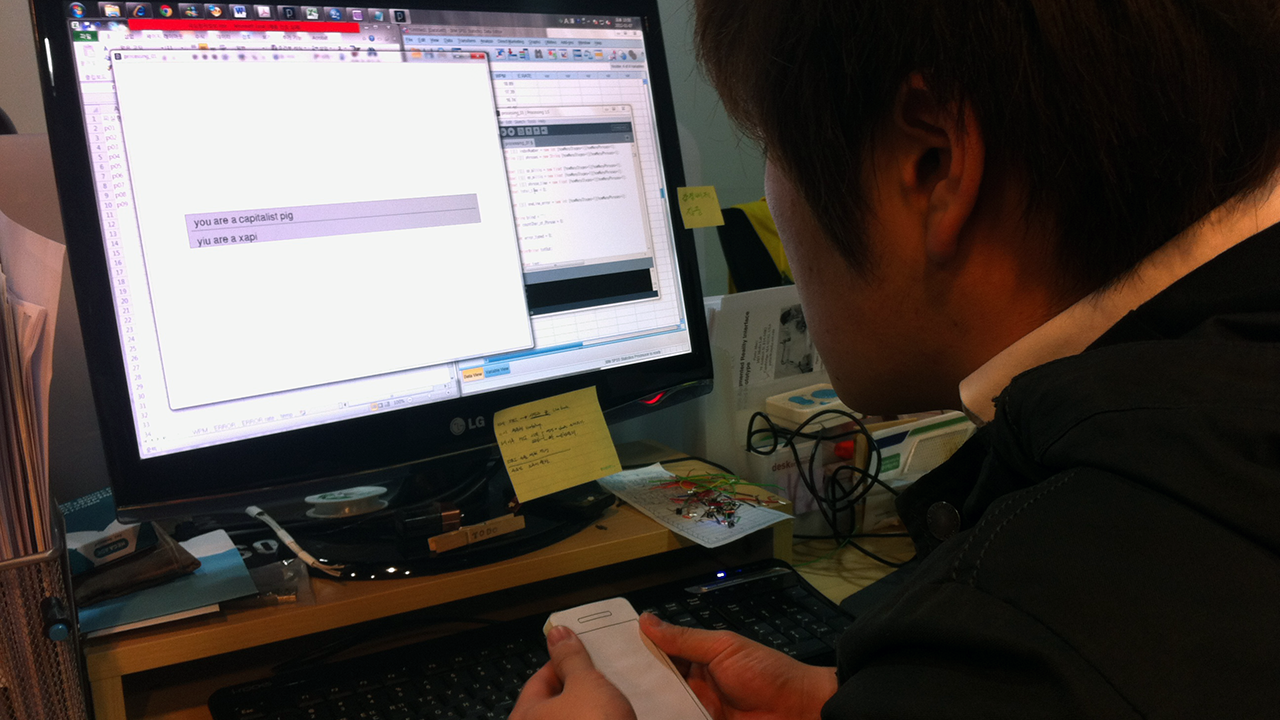HapCube (2018)
Honorable Mention Award, CHI 2018, April 2018,
Montréal, Canada
SIGGRAPH 2018 Emerging Technologies, August 2018, Vancouver, Canada
Co-researcher:
HyeonBeom Yi, Hyein Lee, Richard Chulwoo Park, Woohun Lee
Publications:
SIGGRAPH 2018 Emerging Technologies, August 2018, Vancouver, Canada
Keywords:
Haptic interface / Haptic illusion / Frictional force / Compliance
Haptic interface / Haptic illusion / Frictional force / Compliance
Co-researcher:
HyeonBeom Yi, Hyein Lee, Richard Chulwoo Park, Woohun Lee
Publications:
-
Hwan Kim, Minhwan Kim, & Woohun Lee. (2016). HapThimble: A Wearable Haptic Device towards Usable Virtual Touch Screen. In Proceedings of the 2016 CHI Conference on Human Factors in Computing Systems (pp. 3694-3705). ACM.
DOI: https://doi.org/10.1145/3214907.3214922 -
Hwan Kim, HyeonBeom Yi, Hyein Lee, and Woohun Lee. 2018. HapCube: A Fingertip-Sized Tactile Device Providing 2+1 Dimensional Pseudo-Force Feedback. In Extended Abstracts of the 2018 CHI Conference on Human Factors in Computing Systems (pp.1-4). ACM.
DOI: https://doi.org/10.1145/3170427.3186511 - Hwan Kim, HyeonBeom Yi, Hyein Lee, & Woohun Lee. (2018). HapCube: A Wearable Tactile Device to Provide Tangential and Normal Pseudo-Force Feedback on a Fingertip. In Proceedings of the 2018 CHI Conference on Human Factors in Computing Systems (pp. 1-13). ACM.
DOI: https://doi.org/10.1145/3173574.3174075




Abstract
Haptic devices allow a more immersive experience with Virtual and Augmented Reality. However, for a wider range of usage they need to be miniaturized while maintaining the quality of haptic feedback. In this study, we used two kinds of human sensory illusion of vibration. The first illusion involves creating a virtual force (pulling sensation) using asymmetric vibration, and the second involves imparting compliances of complex stress-strain curves (i.e. force-displacement curves of mechanical keyboards) to a rigid object by changing the frequency and amplitude of vibration. Using these two illusions, we developed a wearable tactile device named HapCube, consisting of three orthogonal voicecoil actuators. Four measurement tests and four user tests confirmed that 1) a combination of two orthogonal asymmetric vibrations could provide a 2D virtual force in any tangential directions on a finger pad, and 2) a single voicecoil actuator produced pseudo-force feedback of the complex compliance curves in the normal direction.
Video clip (CHI 2018)
Video clip (SIGGRAPH 2018 Emerging Technology)
Prototyping process
![]()
![]()
![]()
![]()
![]()
![]()
![]()
![]()
![]()
![]()



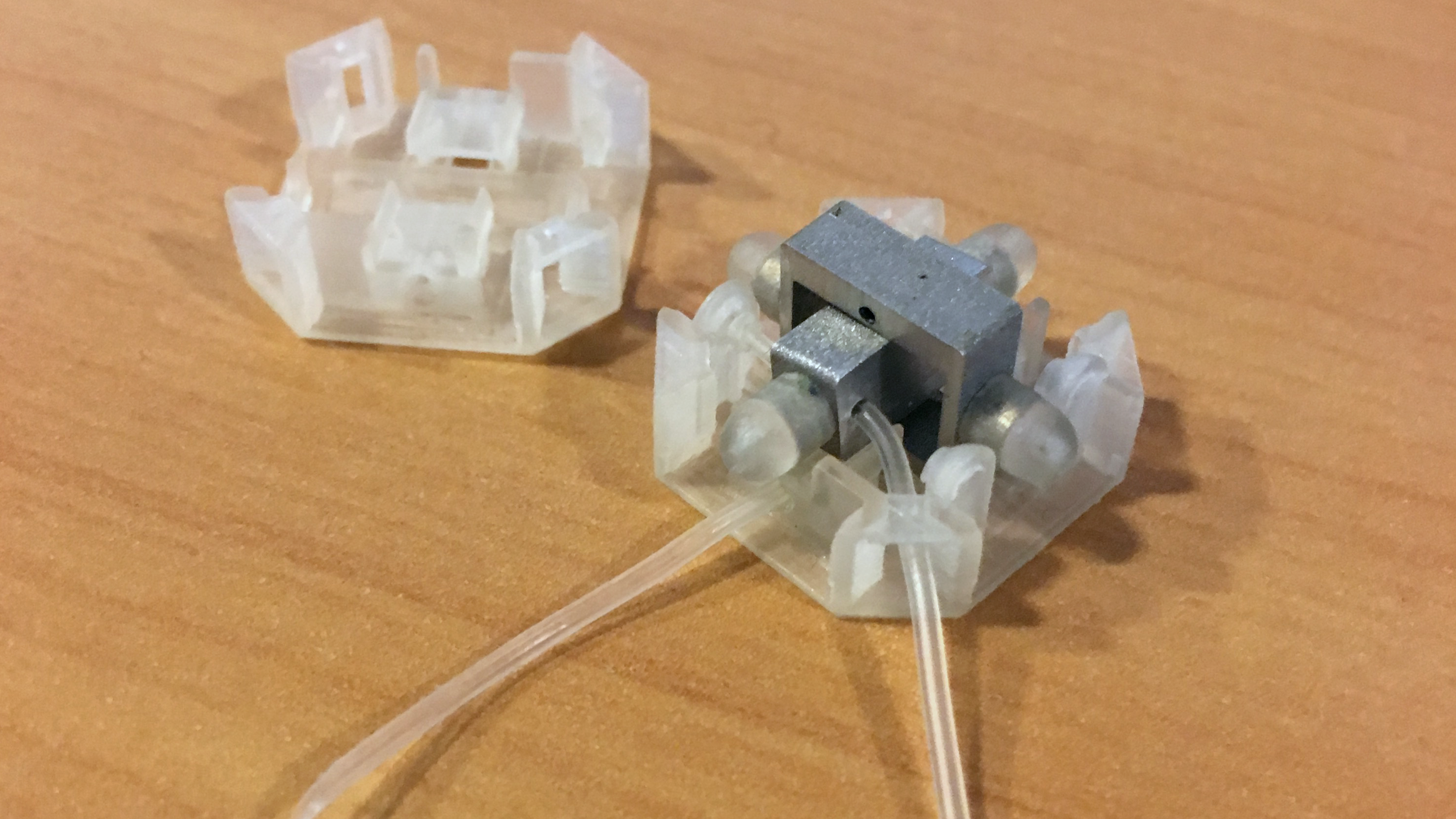
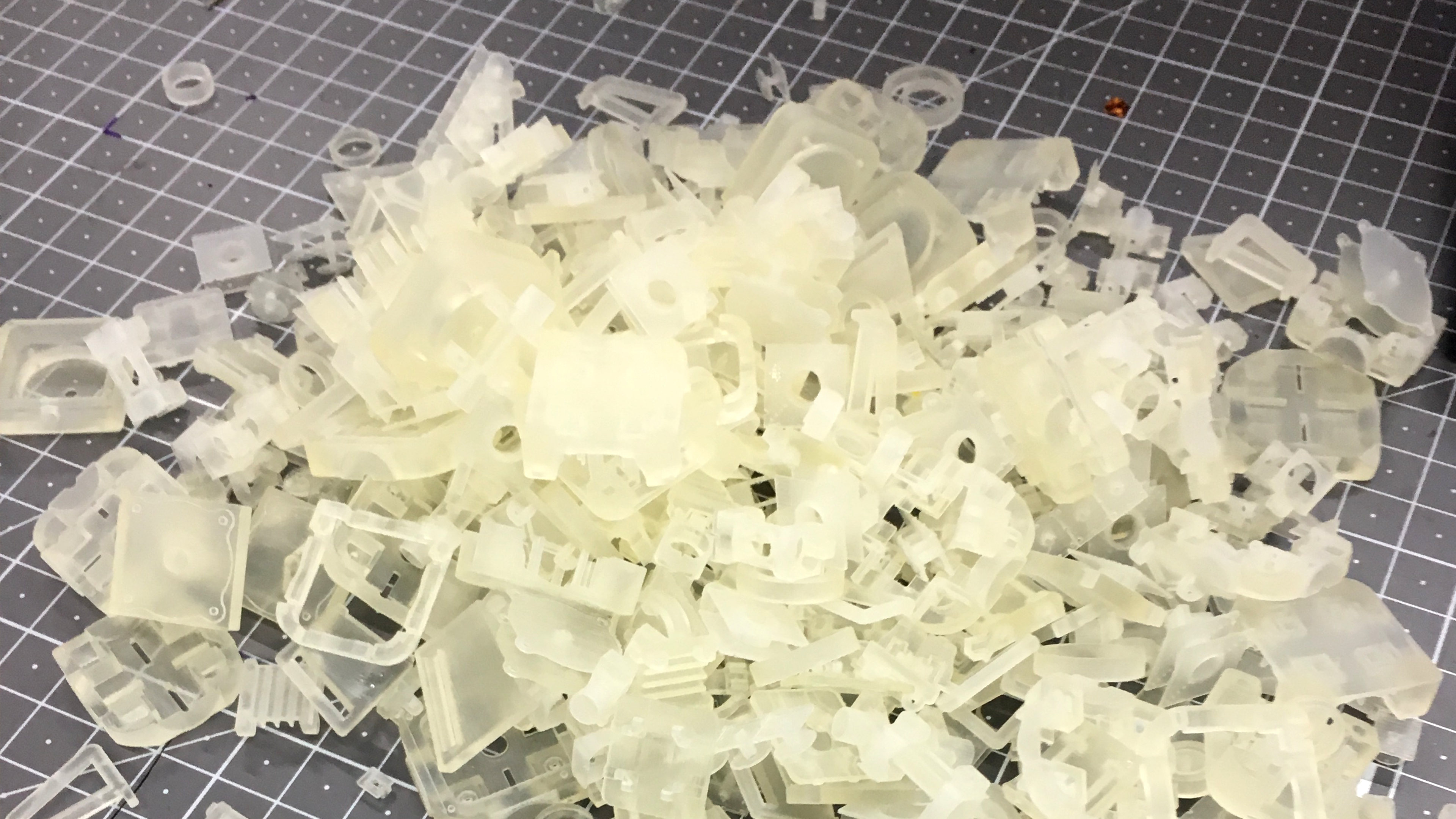





Interactive Seesaw (2016)
Collaborative Project with National Science Museum in South Korea (Daejeon)
Co-researcher:
Donghyeon Ko, Minhwan Kim, Woohun Lee
Acknowledgements:
This work was supported by the National Research Foundation of Korea(NRF) grant funded by the Korea government(MSIP; Ministry of Science, ICT & Future Planning) (No.2015M3C1B4024732)
Keywords:
Science museum / Installation
Science museum / Installation
Co-researcher:
Donghyeon Ko, Minhwan Kim, Woohun Lee
Acknowledgements:
This work was supported by the National Research Foundation of Korea(NRF) grant funded by the Korea government(MSIP; Ministry of Science, ICT & Future Planning) (No.2015M3C1B4024732)
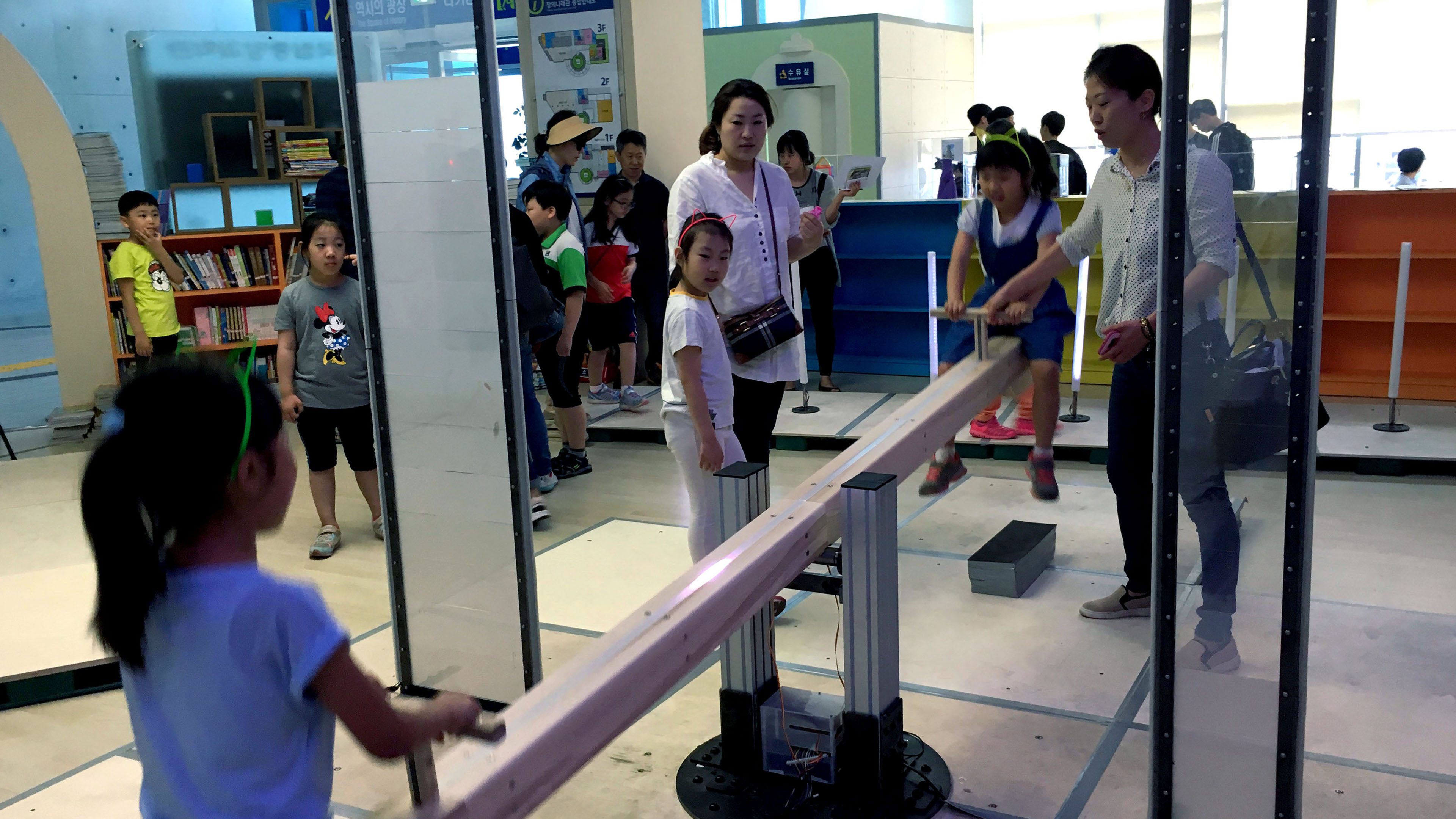
Interactive Seesaw is an installation work that visitors to the science museum can experience. It was developed in collaboration with National Science Museum in South Korea (located in Daejeon). This project was one of three works, which were finally completed a year later. I led this project for two out of three years, and participated as a supporter in the last year. You can see the final result HERE.
Video clip (first prototype)
![]()
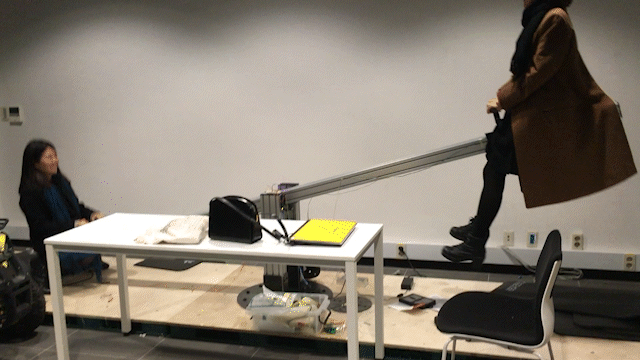
Second prototype
![]()
![]()
![]()
![]()

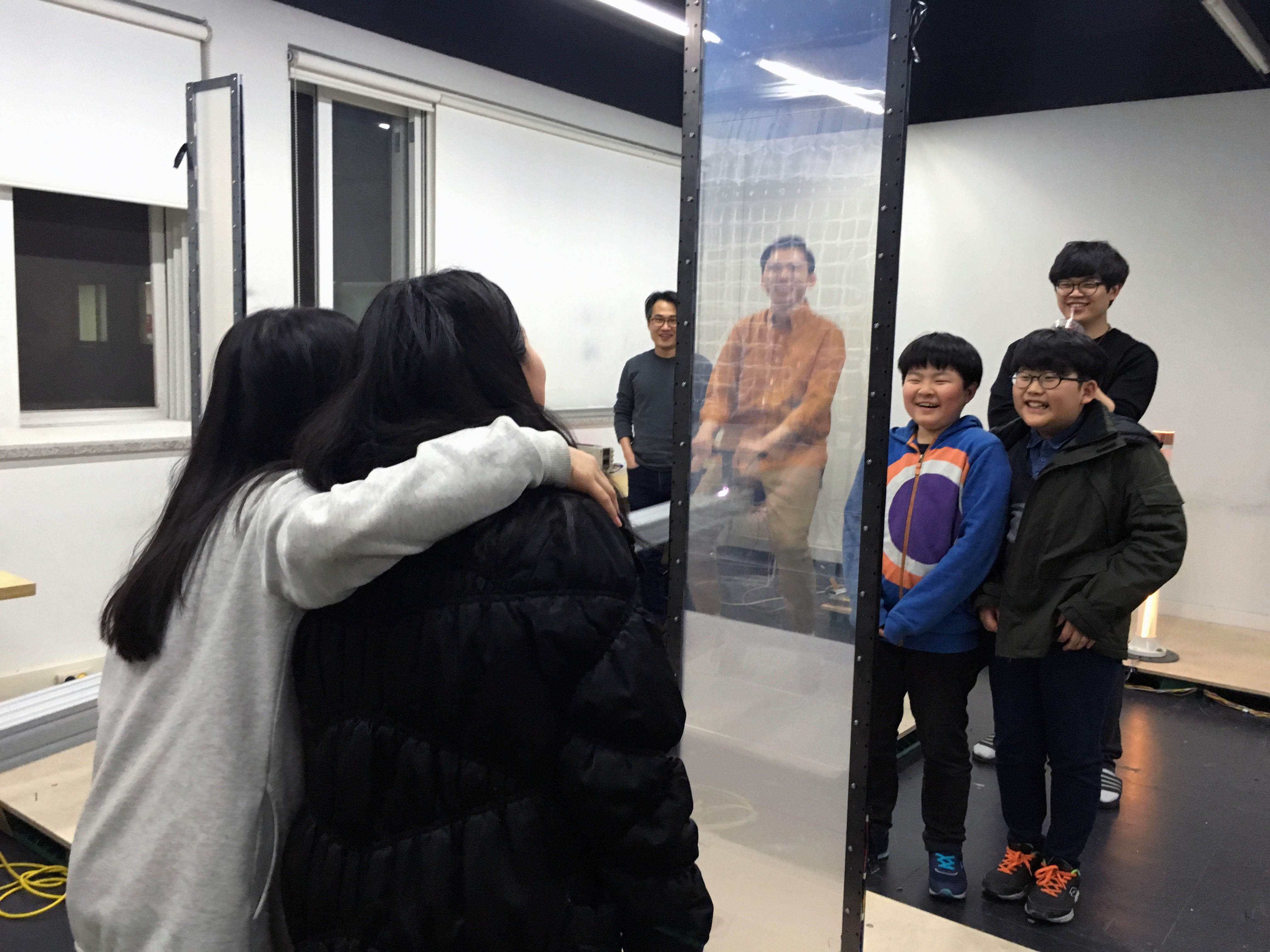
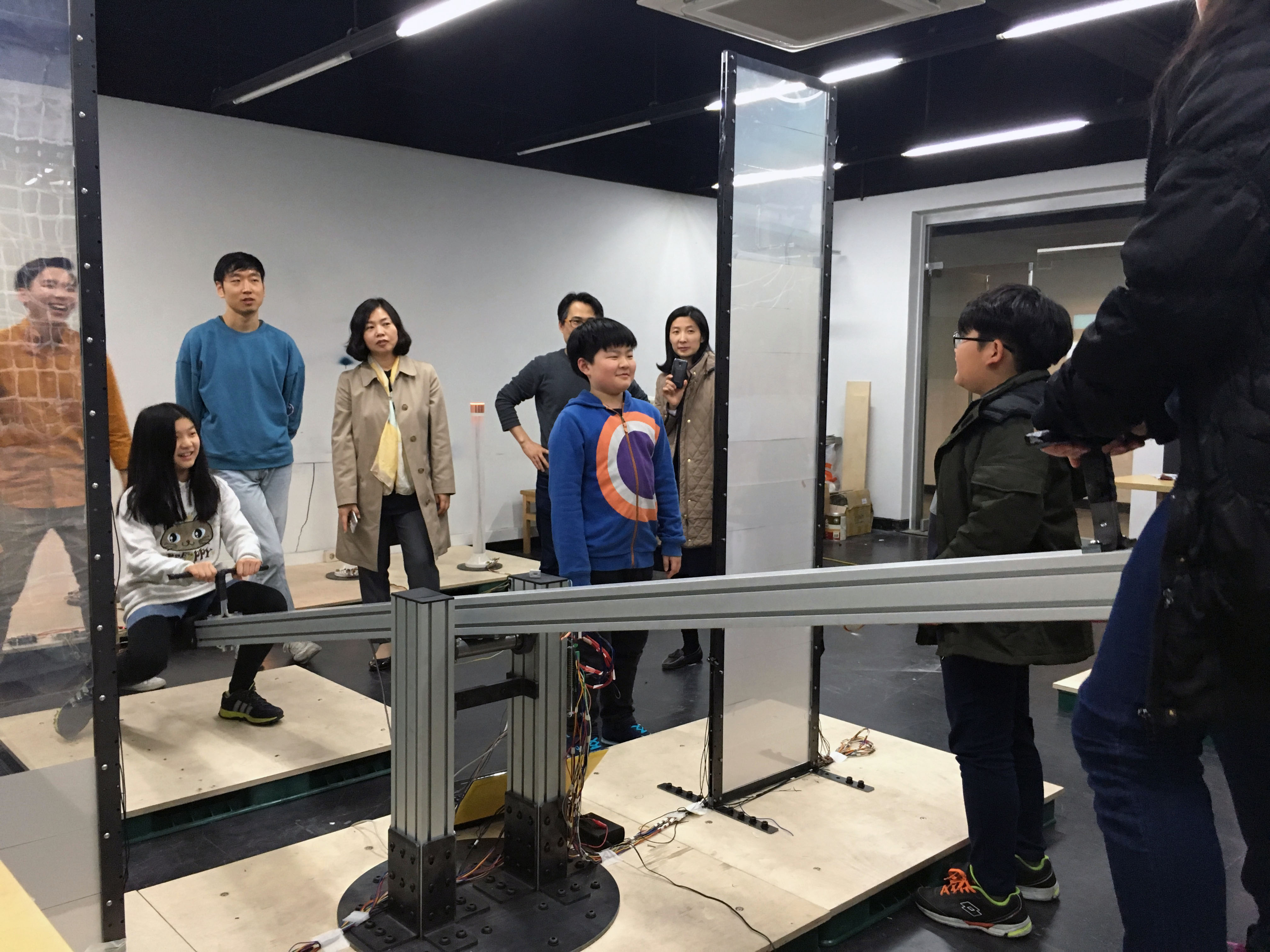
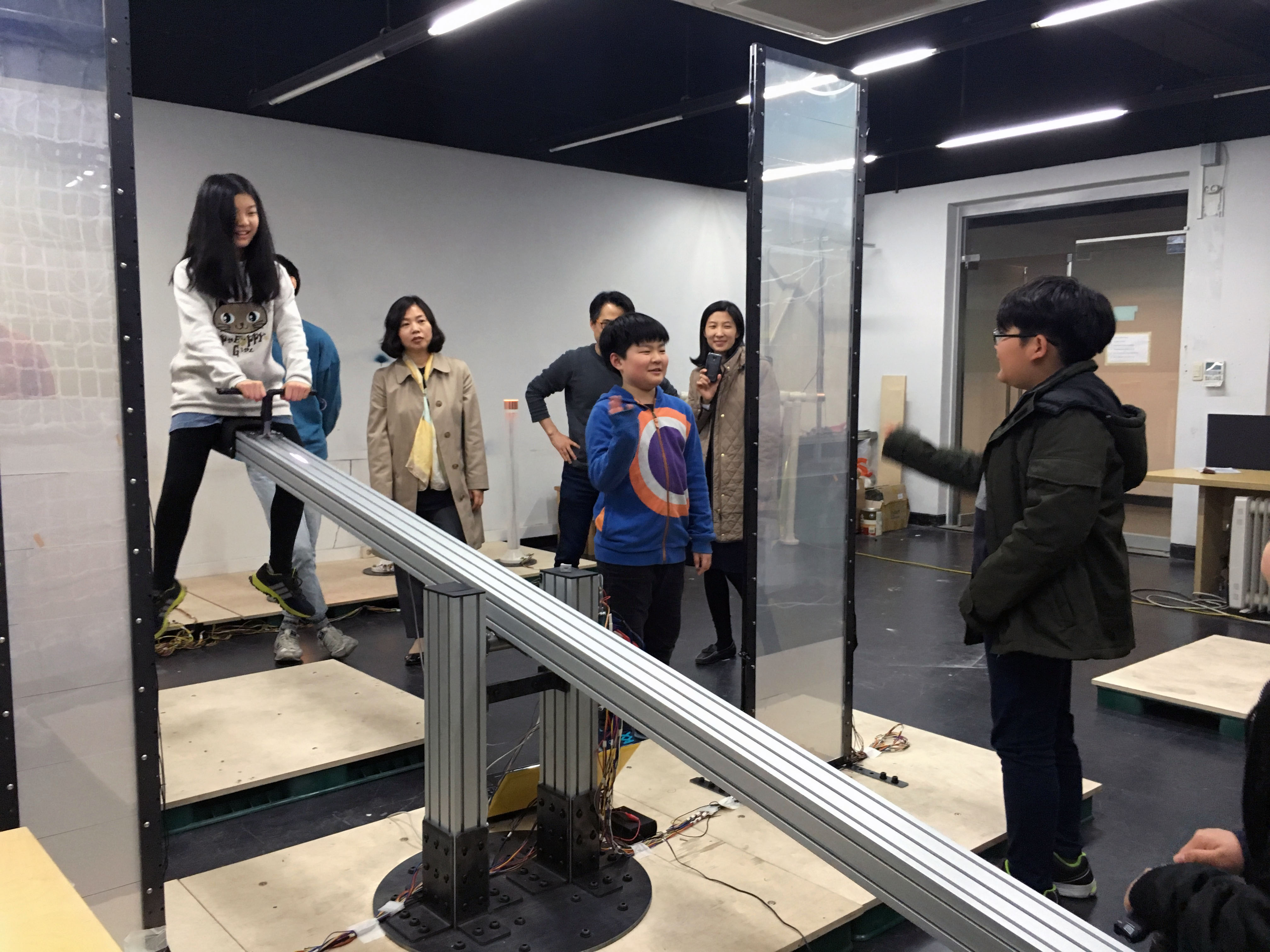
Structure of Interactive Seesaw
![]()
![]()
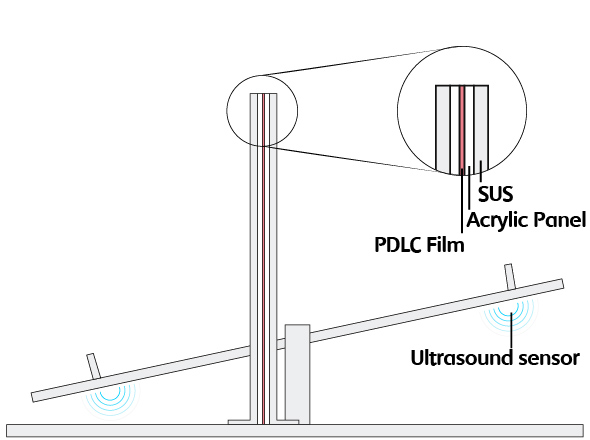
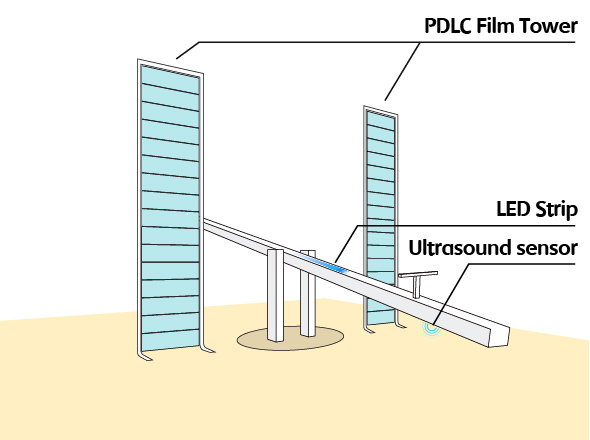
HapThimble (2016)
CHI 2016, May 2016, San Jose, California, USA
Co-researcher:
Minhwan Kim, Woohun Lee
Publications:
Keywords:
Virtual touch screen / Direct-touch interaction / Wearable haptic device / haptic feedback without haptic constraint
Virtual touch screen / Direct-touch interaction / Wearable haptic device / haptic feedback without haptic constraint
Co-researcher:
Minhwan Kim, Woohun Lee
Acknowledge:
Sunjun Kim (he gave us technical support)
Sunjun Kim (he gave us technical support)
Publications:
-
Hwan Kim, Minhwan Kim, & Woohun Lee. (May, 2016). HapThimble: A Wearable Haptic Device towards Usable Virtual Touch Screen. In Proceedings of the 2016 CHI Conference on Human Factors in Computing Systems (pp. 3694-3705). ACM.
DOI: https://doi.org/10.1145/2858036.2858196


Abstract
A virtual touch screen concept using an optical see-through head-mounted display has been suggested. With a virtual touch screen, the user's direct-touch interactions are allowed in much the same way as a conventional touch screen, but the absence of haptic feedback and physical constraint leads to poor user performance. To overcome this issue, we developed a wearable haptic device, called HapThimble. It provides various types of haptic feedback (tactile, pseudo-force, and vibrotactile) to the user's fingertip and mimics physical buttons based on force-penetration depth curves. We conducted three experiments with HapThimble. The first experiment confirmed that HapThimble could increase a users' performance when conducting clicking and dragging tasks. The second experiment revealed that users could differentiate between six types of haptic feedback, rendered based on different force-penetration depth curves obtained using HapThimble. Last, we conducted a test to investigate the similarity between the physical buttons and the mimicked haptic buttons and obtained a 90.3% success rate.
Video clip (CHI 2016)
Fixed virtual touch screen (experimental apparatus)
![]()
![]()


Cap part of HapThimble
![]()
![]()
![]()



Back Keyboard (2012)
CHI 2012 Work in Progress
Co-researcher:
Yeakyung Row, Geehyuk Lee
Publications:
Keywords:
Back-of-device interaction; Keyboard design; Text entry
Back-of-device interaction; Keyboard design; Text entry
Co-researcher:
Yeakyung Row, Geehyuk Lee
Publications:
-
Hwan Kim, Yekyung Row, & Geehyuk Lee. (May, 2012). Back Keyboard: A Physical Keyboard on Backside of Mobile Phone using QWERTY. In Proceedings of CHI’12 Extended Abstracts on Human Factors in Computing Systems (pp. 1583-1588). ACM.
DOI: https://doi.org/10.1145/2212776.2223676
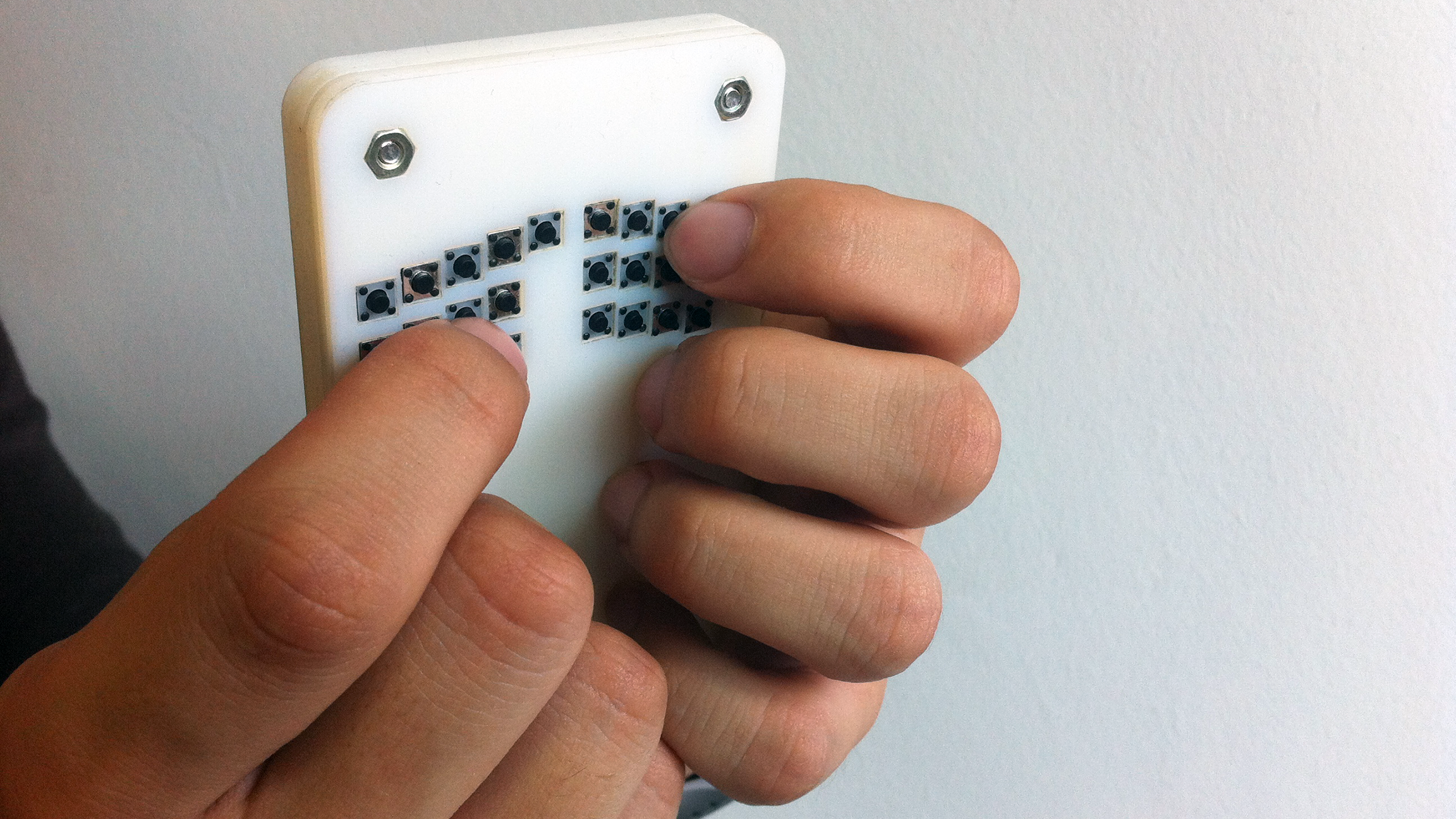
Abstract
Since smart phones adopted touchscreen, users have been enjoying large displays. However, when using soft keyboard, the available size of the display becomes less than 50%. In this paper Back Keyboard, a physical keyboard installed backside of mobile phone, is presented. Also the design process with a prototype through a series of studies is described. User evaluation was conducted with the prototype; the average text entry rate was 15.3 WPM (SD: 3.6) and the error rate was 12.2% (SD: 9.0) after a 40-minute typing session. Moreover, the text entry rates of Back Keyboard and general keyboards for PCs did not have significant relations. This means that the prototype could be used smoothly regardless of one’s ability of typing on a PC.
Prototypes (first, second, and third)
![]()
![]()
![]()
![]()
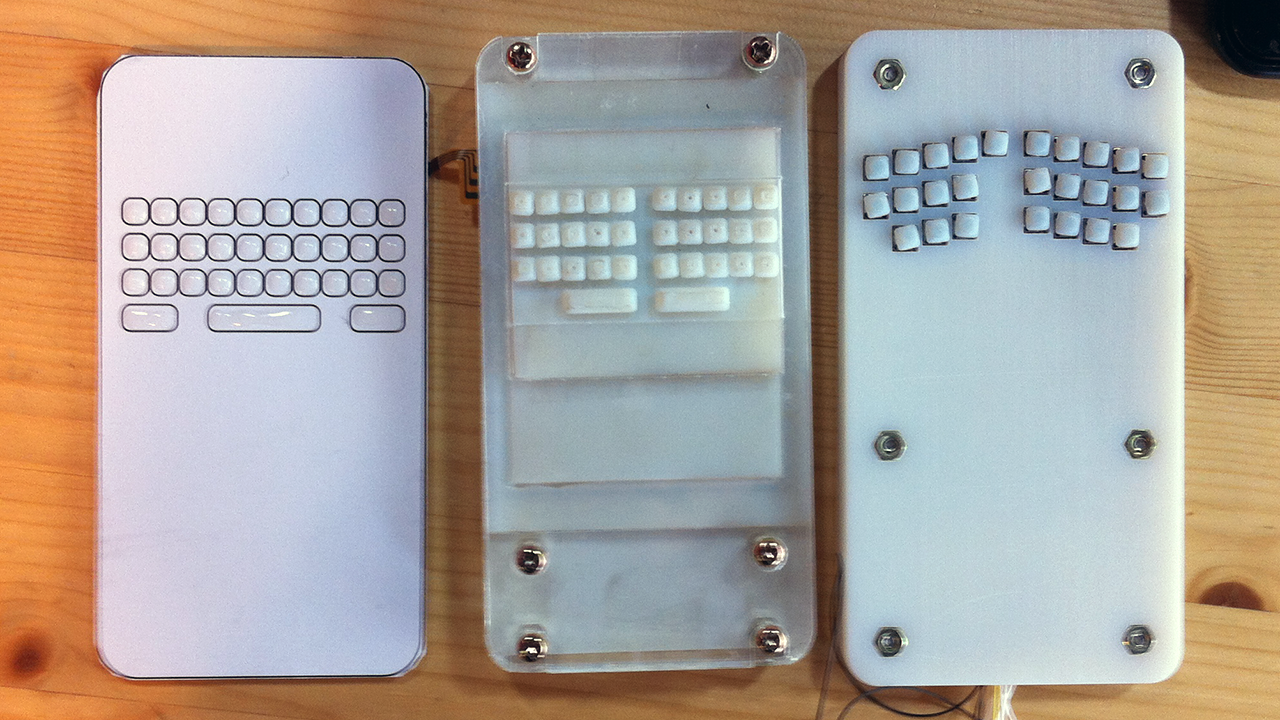
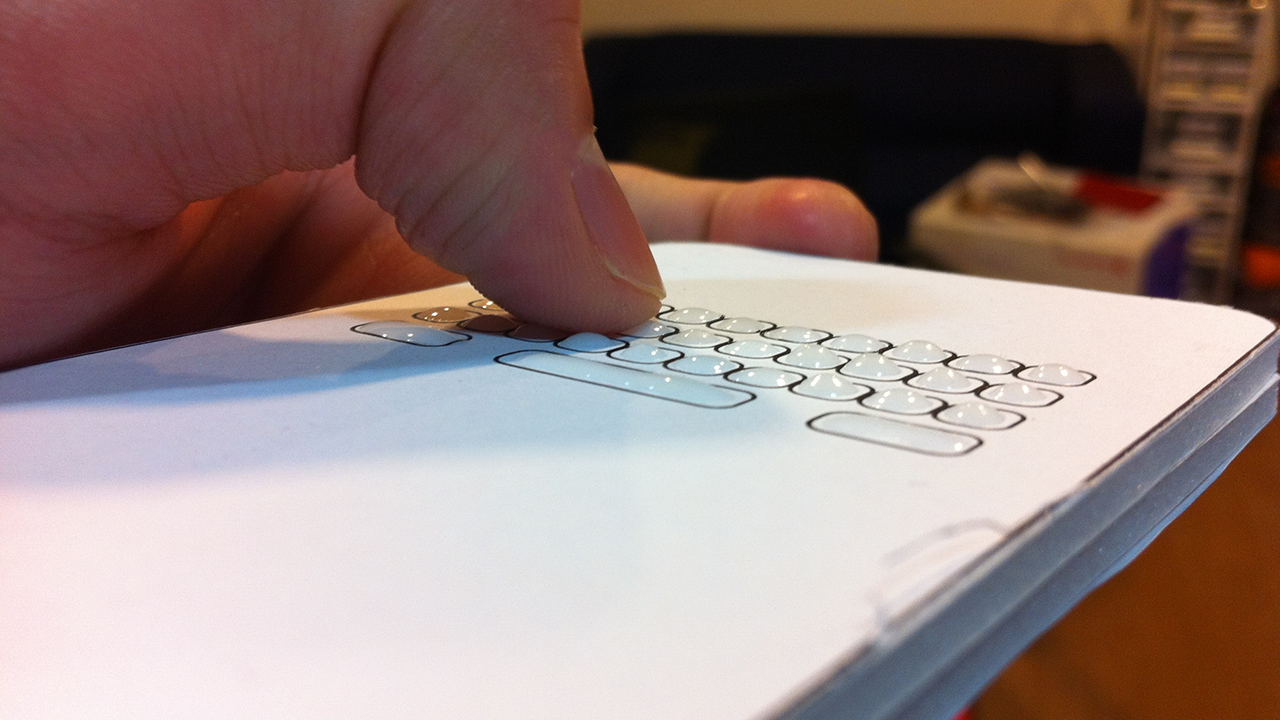
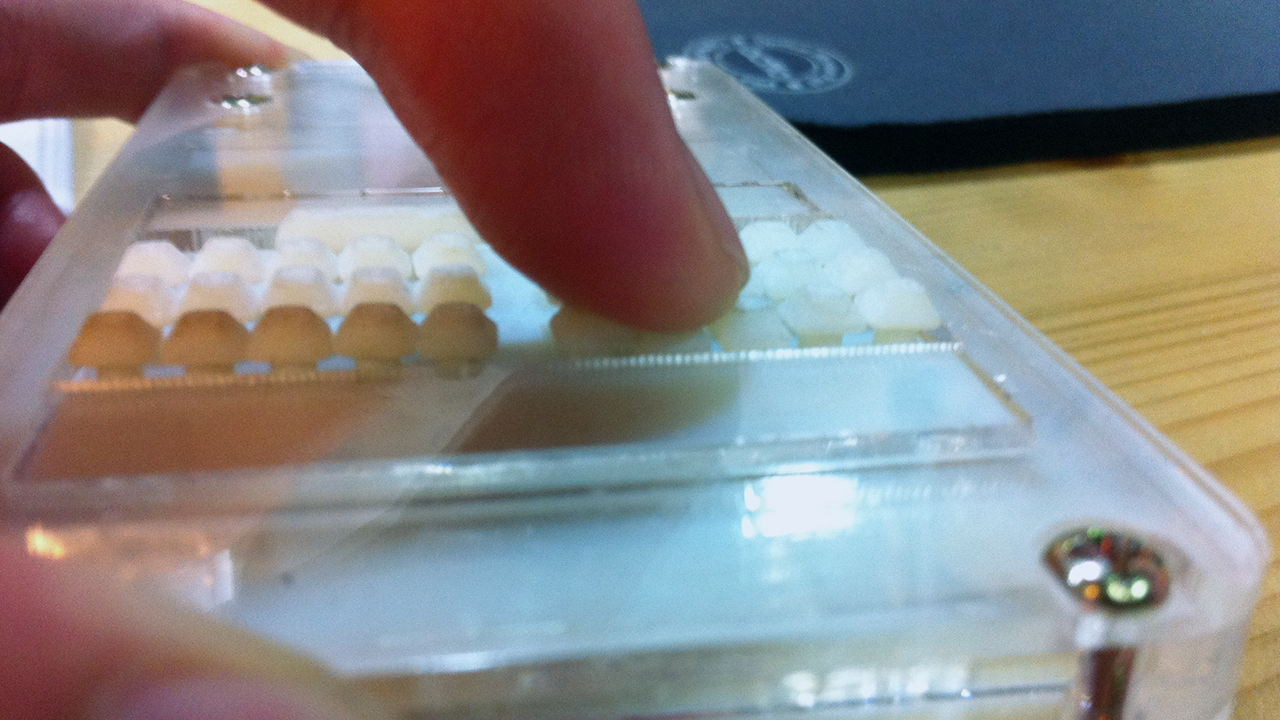

Keyboard layout derived from experimental results
![]()
![]()
![]()

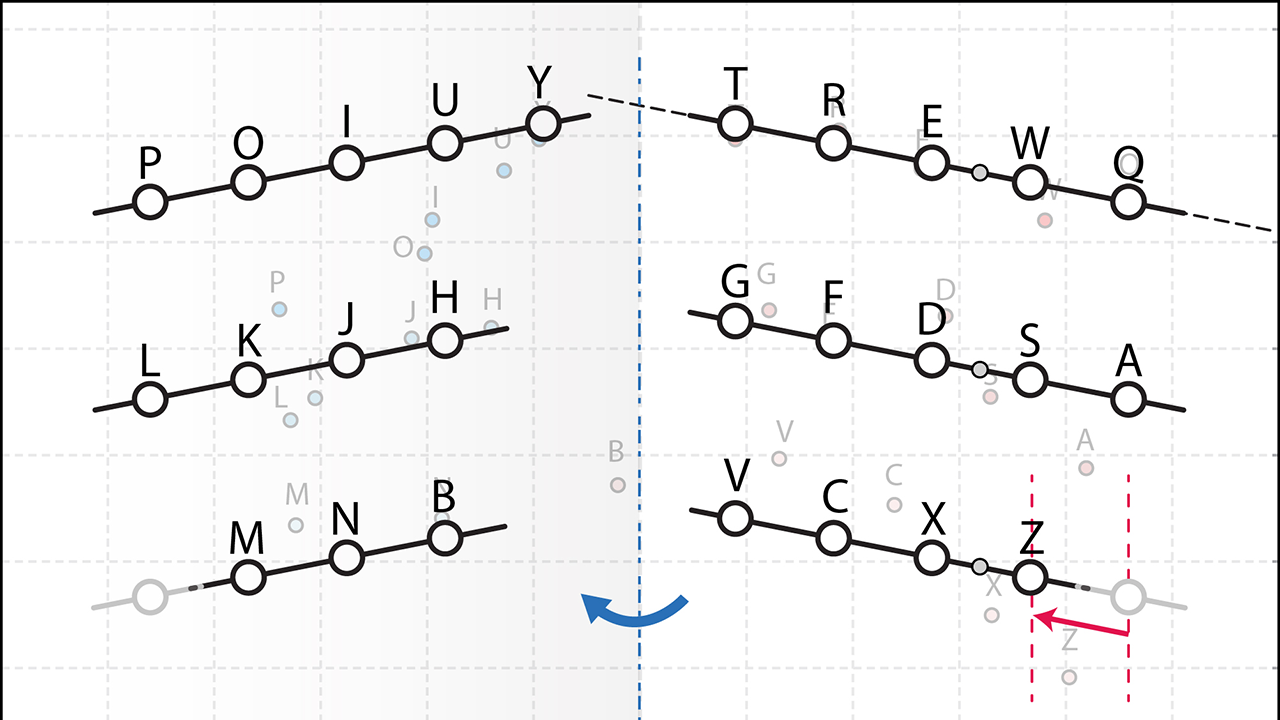

User evaluation
![]()
![]()
